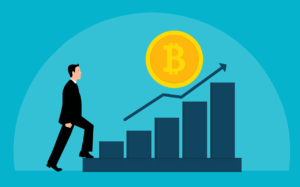A few decidedly important things have happened in recent weeks involving the world’s most important crypto DEX, namely Uniswap.
For one thing, support for BNB Chain was recently added.
Now the DEX, which originated on Ethereum and later extended to Layer 2 Polygon, Arbitrum and Optimism, is also available on Celo and BNB Chain.
It is worth noting that Ethereum, with its various Layer 2s, and BNB Chain are by far the two blockchains with the highest TVL in DeFi. They occupy five of the top six places in DeFiLlama’s special ranking, with the inclusion of only Tron in second place thanks to the JustLend and JustStables protocols.
The crypto volumes
This now makes Uniswap the dominant DEX among decentralized crypto exchanges, although by TVL it is surpassed by Curve.
In terms of volume, it is unbeatable in every sense of the word: there is no DeFi protocol in the world that can even come close to Uniswap in terms of volume, so much so that by itself Uniswap currently generates more than half the daily trading volume of all DeFi protocols combined.
Thanks to this outright dominance, Uniswap recently even managed to surpass Coinbase, which is the largest centralized US crypto exchange.
Taking only spot volumes, since there are no futures on Uniswap, Coinbase is traveling at just over $1 billion in daily trading volume, while Uniswap has now been almost steadily above $1.4 billion since the beginning of the year. Even on 11 March it surpassed 13 billion, setting a new all-time high for daily volumes on a DEX.
As it had also fallen below 0.2 billion daily volumes at the end of December, this is a real boom that occurred in 2023, although current levels are in line with that of, for example, September 2022.
Uniswap’s update
Furthermore, on 1 April, the Uniswap 3 protocol was updated when the Business Source License (BSL) expired.
Now the code has become open source, since the launch two years ago included a license valid for two years.
The success of DEXs
It is possible that one of the reasons that is driving many traders to use DEXs is that they can be used with non-custodial wallets.
During 2022 several failures of centralized platforms, the most prominent of which was FTX, blatantly highlighted the risks of holding tokens on wallets owned by third parties, where custody is then entrusted exclusively to others.
Indeed, the moment people entrust their tokens to a custodian, in case the custodian closes down, there is no way to recover them except to hope that someone takes over, or takes over the management of the assets and decides to return them to the users.
Uniswap after FTX
This is precisely what happened to FTX, with the Japanese version having reopened to allow users to request the return of funds, while the international version is still in the hands of the bankruptcy trustee who has not yet decided to reopen withdrawals due to a mere lack of funds.
However, storing tokens on exchanges is critical for those who want to day trade.
The solution may be to use DEXs, which are decentralized protocols that allow users to retain full control of the wallets on which their funds that they decide to use for trading are stored.
In reality, there is still risk, because if the decentralized protocol has bugs then the funds can still be lost, although it is now reasonably clear that Uniswap has no such problems.
It is therefore by no means a coincidence that many users who have chosen to use a DEX have preferred a solid protocol like Uniswap, which over time has proven to withstand the inevitable attack attempts very well.
So while DEXs per se are not necessarily a low security risk alternative for those who want to trade, secure DEXs like Uniswap are.
Moreover, thanks to layer 2 solutions and BSC Chain, the fees have also been greatly reduced. When the first version ran only on the Ethereum blockchain, it was not at all convenient to make many trades, especially of small amounts. Now even that problem has been partly solved.







